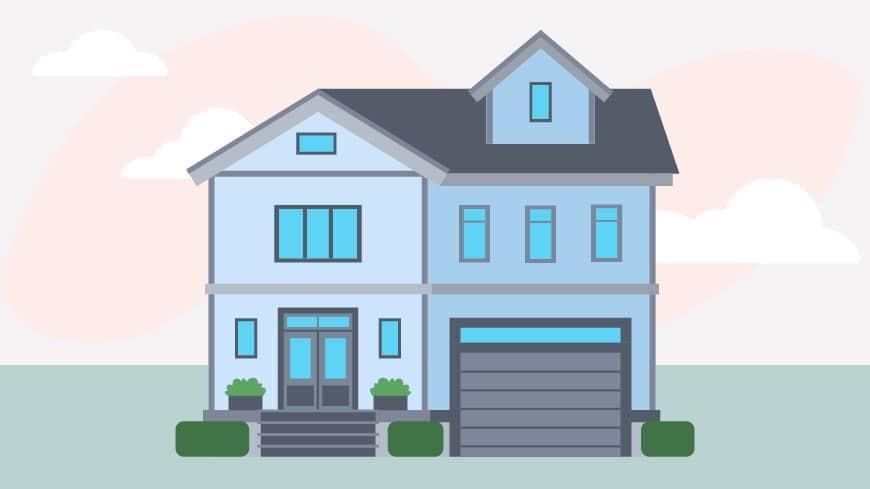What's a balloon payment? How do balloon payments work with mortgages?

A mortgage is a long commitment, often lasting up to 30 years on a standard fixed rate loan. Some homeowners look for ways to shorten the amortization schedule — for instance, by making extra payments each month on their mortgage. Others go in the opposite direction, taking every opportunity to lower monthly payments. Balloon mortgages try to do two things at once: make extra payments on a mortgage and work to reduce monthly payments.
Historically, people have used balloon payment structures to backload the money owed on a home loan and pay less each month until that final lump sum comes due. This approach comes with a lot of risk, and many lenders won’t even offer balloon payments for residential properties. Still, you may come across this type of amortization schedule when shopping for a mortgage, so it’s good to know what you’re getting yourself into.
What is a balloon payment on a mortgage?
Balloon Payment Defined
A balloon payment — or balloon note — is a large lump sum payment that borrowers owe before a home loan can fully amortize. Backloading the bulk of the principal comes with a couple of benefits for homeowners — namely reduced interest rates and lower mortgage payments.
While balloon loan terms are usually short — say, five or seven years — the payment due on a balloon amortizes over 30 years. So you’re making lower payments than what would be required to pay off a traditional loan in that same five or seven year timeframe.
As such, you owe less each month for a set period of time, but the money due to pay off your home loan will “balloon” at the end of your amortization schedule. The total cost of the loan won’t change, mind you, you’re simply paying less in the short term.
It should be noted that most qualified mortgage lenders rarely use balloon loans today aside from commercial real estate transactions. We’ll get to why that is in just a bit. Given the unique structure of balloon mortgages, with so much money owed all at once, it’s not hard to see where this approach can go wrong. If you are offered a balloon note as a mortgage option, you should consider all the risks before agreeing to these terms.
How do balloon payments work?
Balloon mortgages are structured into two separate phases: the initial period in which the borrower makes smaller payments each month and the second term when the rest of the loan amount is due.
For instance, your note may list a 30-year conventional home loan with a five-year term. What this means is that you will make payments each month as if you had a 30-year fixed rate mortgage. But after five years, you’ll need to pay the rest of the loan in full. Understandably, this can be very confusing as a buyer because you may not even realize you’re agreeing to a balloon payment.
It can be helpful to think of a balloon mortgage as something akin to an adjustable rate mortgage (ARM). The key difference being that with an ARM, your interest rate adjusts after five or seven years. Whereas with a balloon loan, you’ll need to repay the loan in full. When that initial period ends, you have a few options: pay off the remaining loan amount, request an extension from your lender or refinance your mortgage with different lending terms.

Balloon mortgage payments: a thing of the past?
Balloon payments were much more common 30, even 20, years ago. Then the housing market crashed in 2008. In the fallout of that economic crisis, the government and lending industry have worked to curtail predatory lending practices, even those that simply have the potential for abuse. As such, balloon payments have fallen out of favor, at least in the residential space.
Commercial real estate transactions still rely heavily on these payment structures, but the risk of default is much lower compared with consumer borrowers. After all, commercial properties such as apartment complexes and office buildings generate profit for the owners. So, they are more likely to build up the funds needed to pay off the rest of their balloon note.
Does that mean that you'll never be offered a balloon payment option when buying a house? Not necessarily, but credible lenders have largely put an end to these practices, so it’s fair to view any such offer with a healthy dose of skepticism.
Is a balloon payment good or bad?
In the context of residential real estate, balloon payments are generally viewed in a negative light. There’s a high potential for abuse at the borrower’s expense, and as such, this payment structure may be considered an example of predatory lending.
That being said, there’s nothing inherently bad about balloon payments, so long as the buyer understands the full ramifications of this type of loan. The Truth in Lending Act (TILA) specifically details what disclosures lenders need to make when extending a loan to homebuyers. Balloon payments are one of the most prominent loan terms outlined by TILA. Any lender that attempts to obfuscate or paper over the risks of a balloon loan would be in violation of TILA.
The truth is most borrowers will probably be better served avoiding balloon payments. Putting together the money needed for a fully amortizing loan in such a short period of time would be difficult for anyone. That’s easy enough to see given the ubiquity of the standard 30-year fixed rate loan. After all, if people had the funds on hand to pay down the bulk of a mortgage after five or seven years, these types of home loans wouldn’t be so popular.
What to do if you can’t afford your balloon mortgage payment
As noted, it’s unlikely you’ll be offered a balloon loan as a residential homebuyer, but it happens. If you can’t afford the lump sum payment, you have two options to consider:
- Ask for an extension: Lenders may provide borrowers more time to pay back the loan, so it’s worth requesting an extension.
- Refinance your mortgage: You may be able to refinance your mortgage with different lending terms that don’t involve a balloon payment at all, such as a conventional fixed rate mortgage or ARM.
In conclusion
Balloon payments backload the amortization schedule, requiring borrowers to pay off the bulk of the home loan after a set period of time has gone by. As a tradeoff, homebuyers may receive reduced interest rates and lower monthly mortgage payments during the initial loan term. While enjoying those short-term benefits, borrowers need to build the funds needed to pay off the balloon note when it comes due and fully amortize the home loan.
Balloon payments have fallen sharply out of favor with residential real estate transactions in the wake of the 2008 housing crisis. In fact, many within the industry now view this practice as an example of predatory lending.
The complexity of the mortgage process increases the likelihood of agreeing to lending terms you may not fully understand. Be sure to work with a mortgage expert you can trust to choose loan terms that fit your specific financial situation and needs. Always take the time to shop around and find the best financing options at the best price possible.




